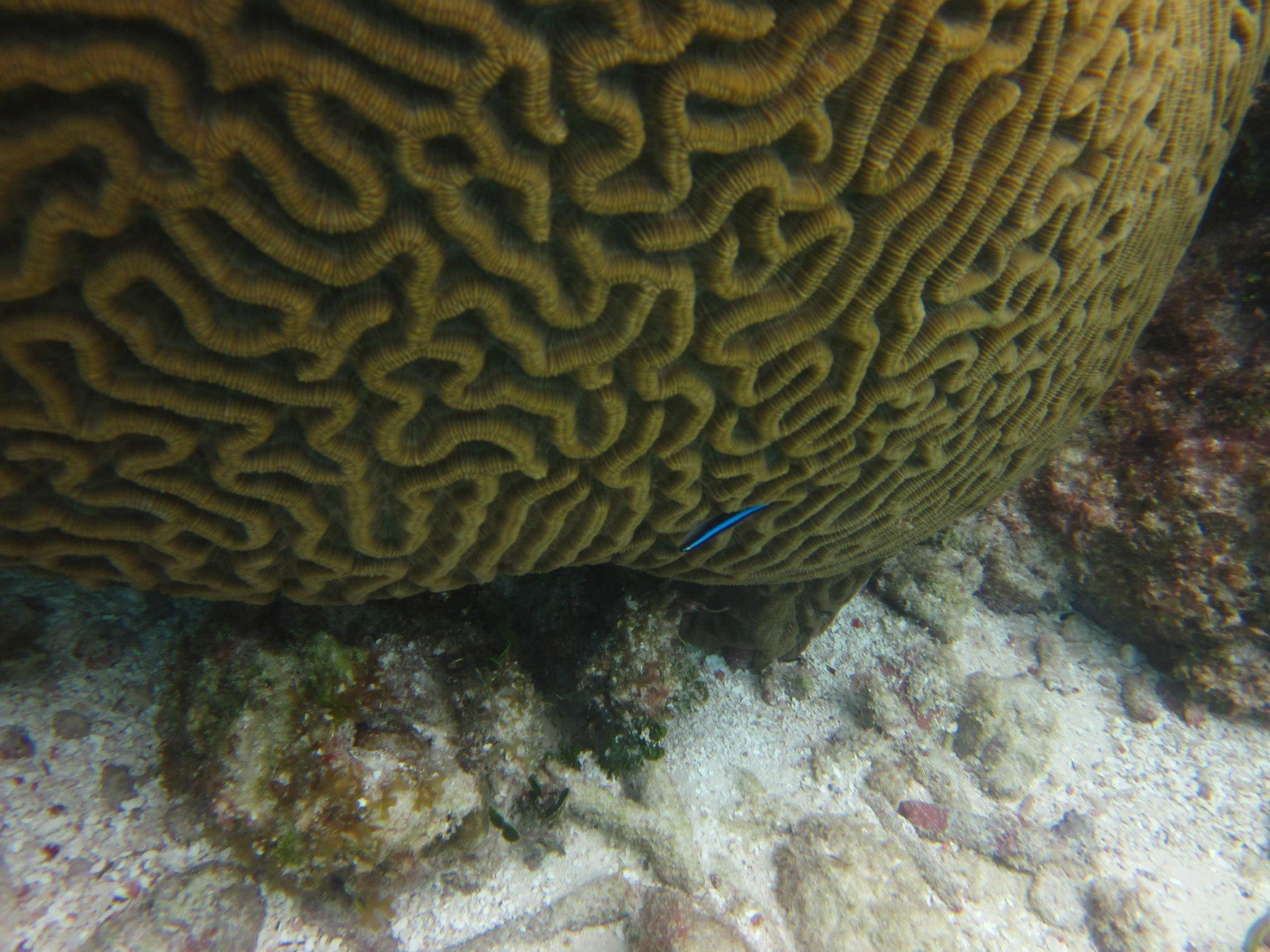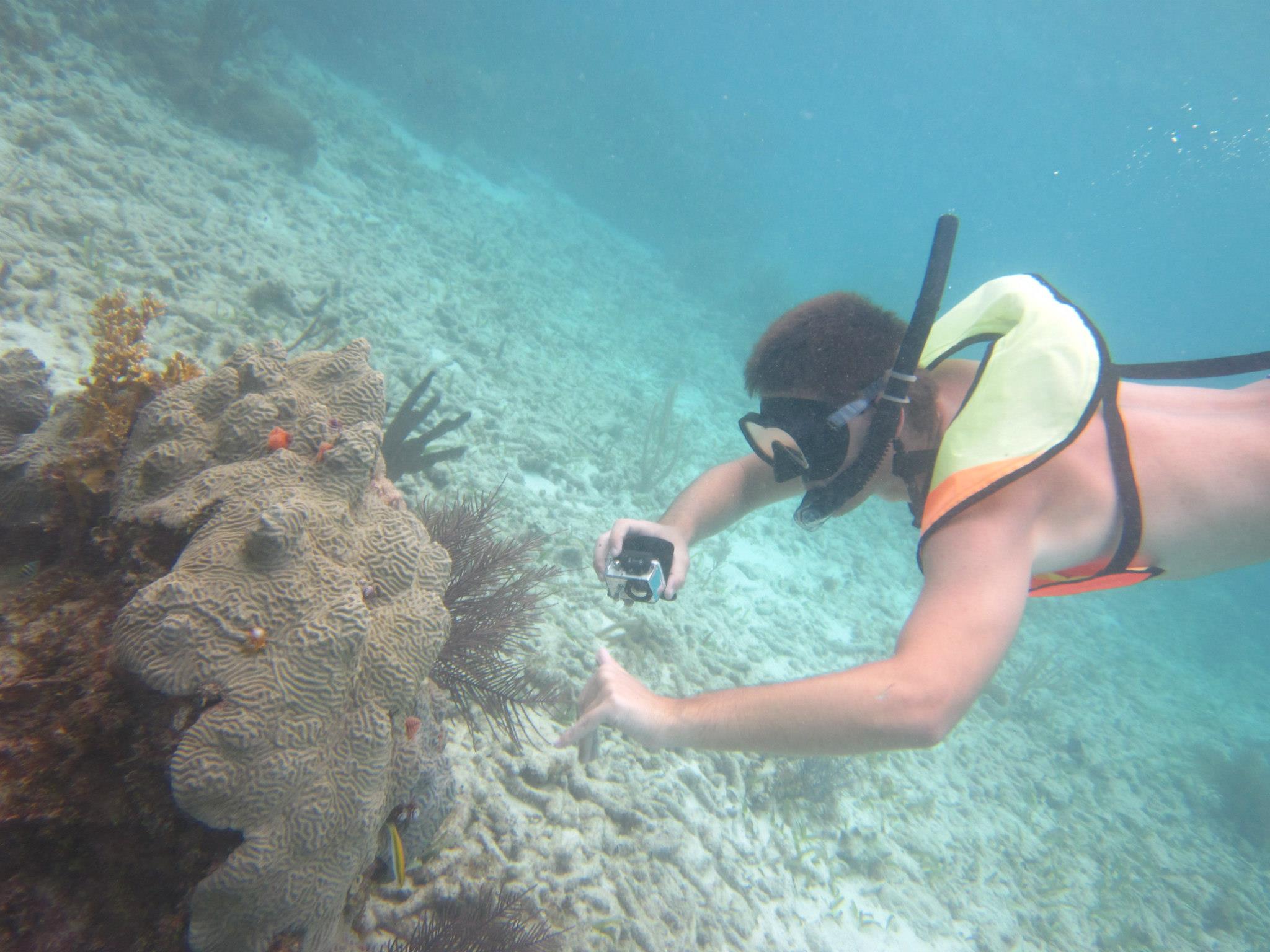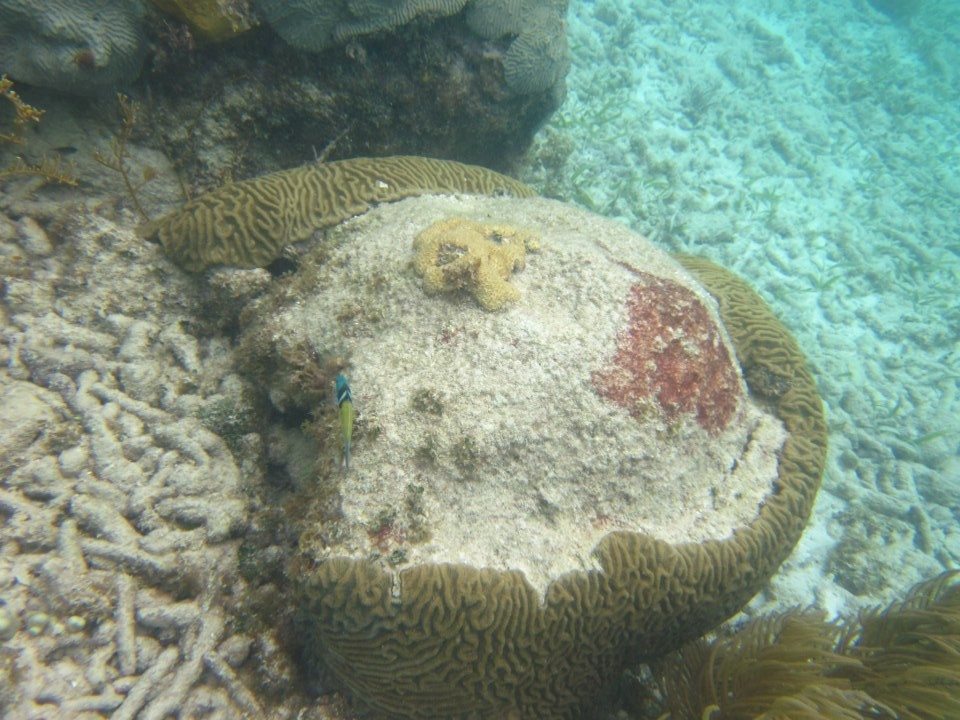Appearance
If you can't already tell, Diploria labyrinthiformis, or grooved brain coral are named after their "brainy" appearance. A majority of them look a lot like a human brain that we've seen on TV in the Frankenstein movies, or perhaps you've seen one in real life. Diploria labyrinthiformis is considered a "hard coral" as most brain elkhorn corals are. Some examples of soft corals are gorgonians, sea whips, and sea fans. This is a picture of the Maze Brain Coral!
Other species of brain coral can come in all colors and sizes. Here are a few images that you can check out! Pink Brain Coral Green Brain Coral Yellow Brain Coral Open Brain Coral
The small
polyps that colonize and make up brain coral excrete a calcium carbonate
outer layer which forms the skeletons of these creatures. These
polyp skeletons are often referred to as
"valleys" from their large sizes and deep grooves. “Brain coral
skeletons snake around the coral head in shapes of jelly beans, half moons
and squiggles”






